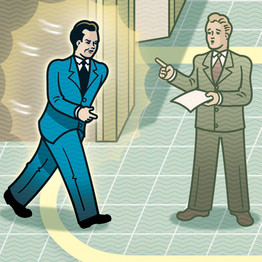
“Rushing blocks thoughtful communication and creates worries among colleagues” Ditto docs and patients.
What’s remarkable is that almost universally patients assume their problems are too small for me. Questions and inquiries are often prefaced with the belief that I’ve got too much going on to help them with something perceived as less-than-important. All of this comes down to mindfulness and focus in the interactions we have with patients. We have to intentionally put ourselves in a place where we’re given to the patient for the time we are with them.
“A calm, unruffled work style is still a mark of competency, management experts say. Executives who have figured it out … are poised and strategic. That’s a big difference from reacting all day”
What goes for executives goes for physicians. The further I go in medicine the better I get at transitioning from stressful, reactive situations to calm, reserve and focus. Managing my father from 2,000 miles away had it challenges but allowed me to practice this type of rapid transition. Sometimes it takes a little bit of theater.
Secondhand stress is worth thinking about. And it’s not just for executives.